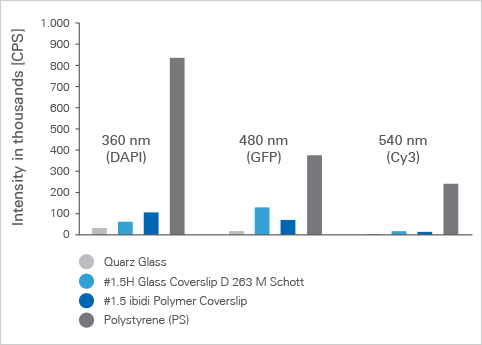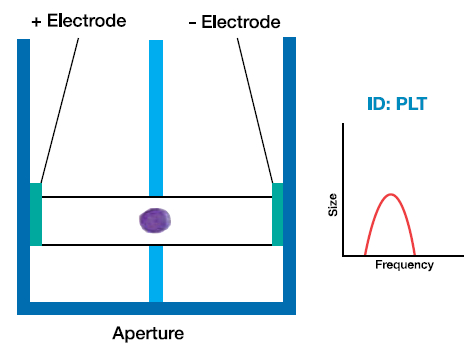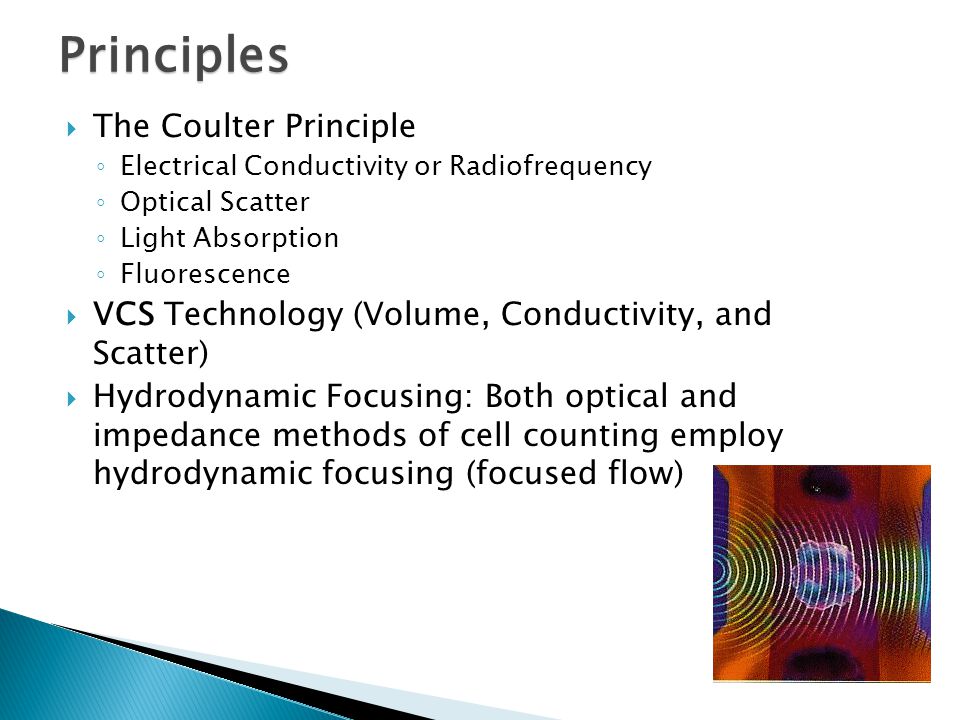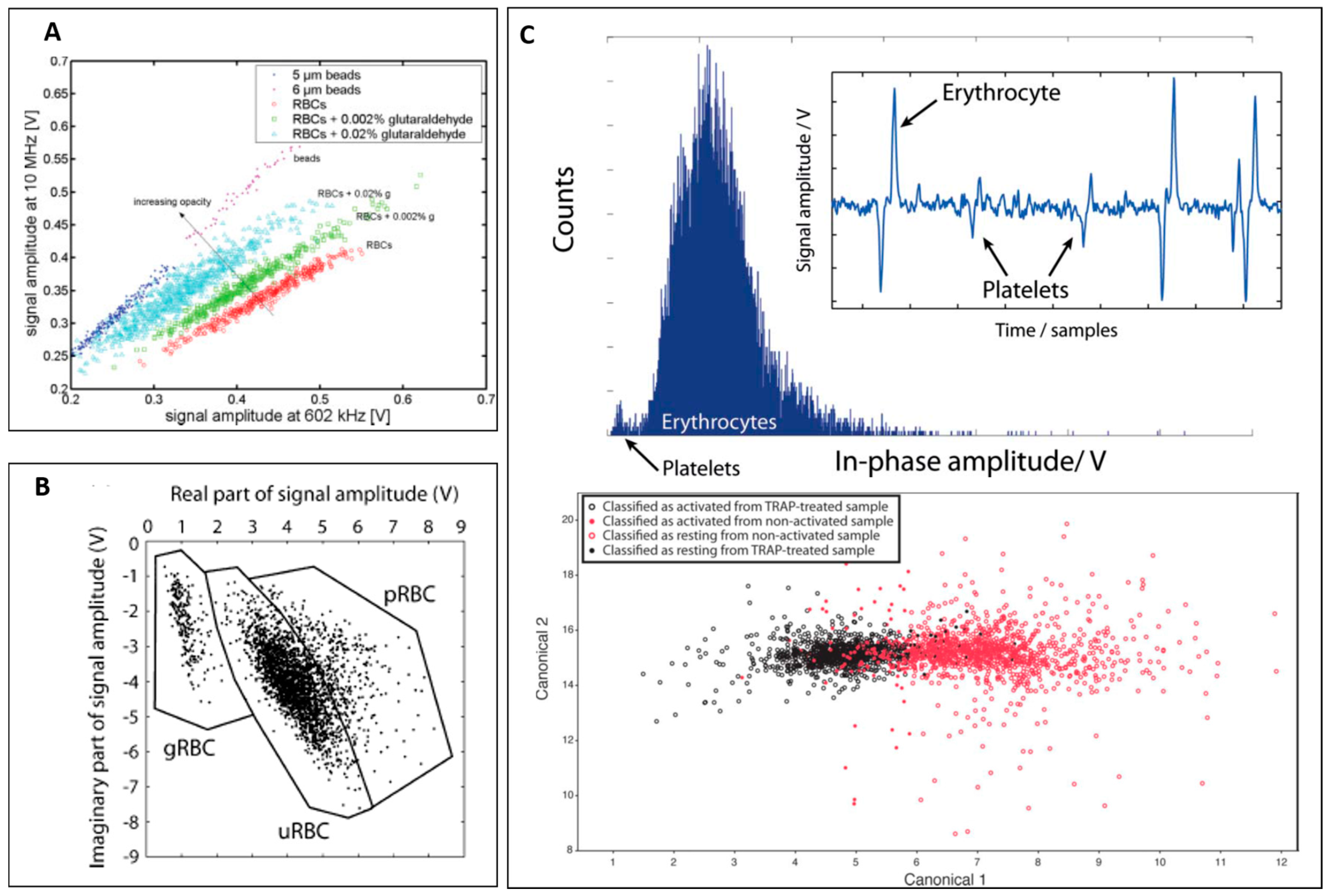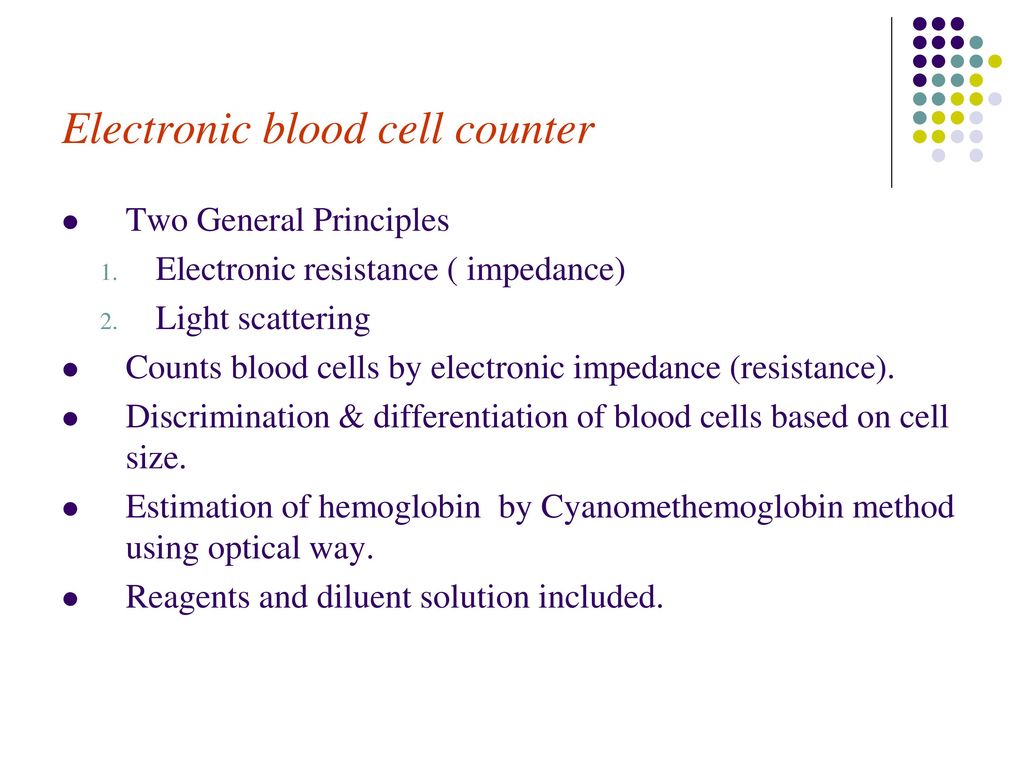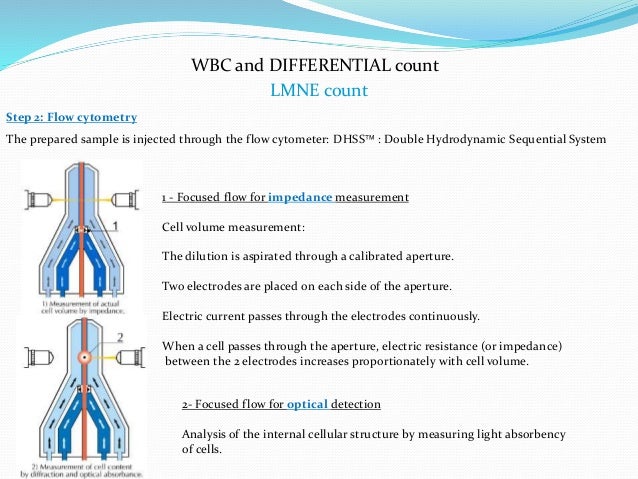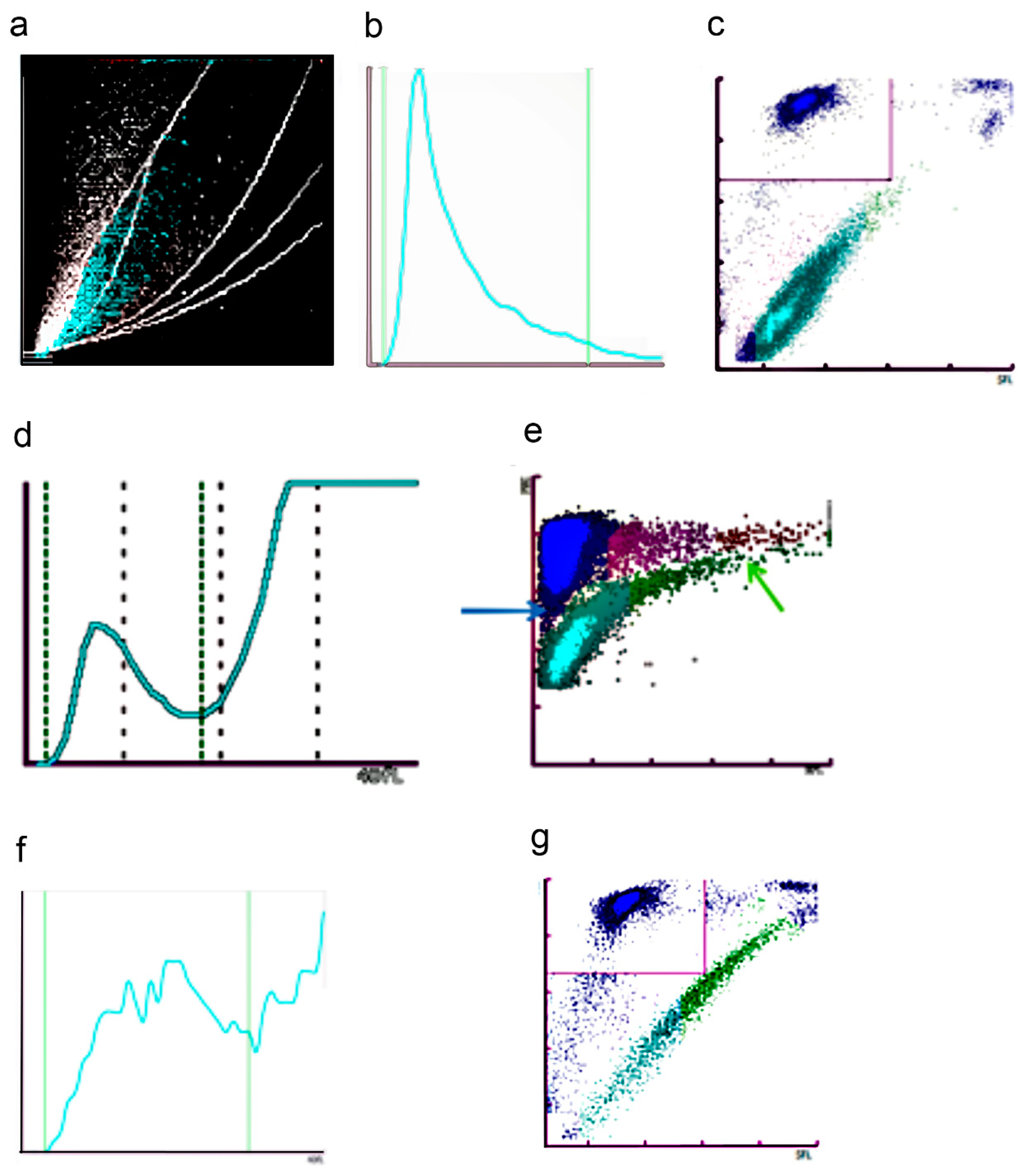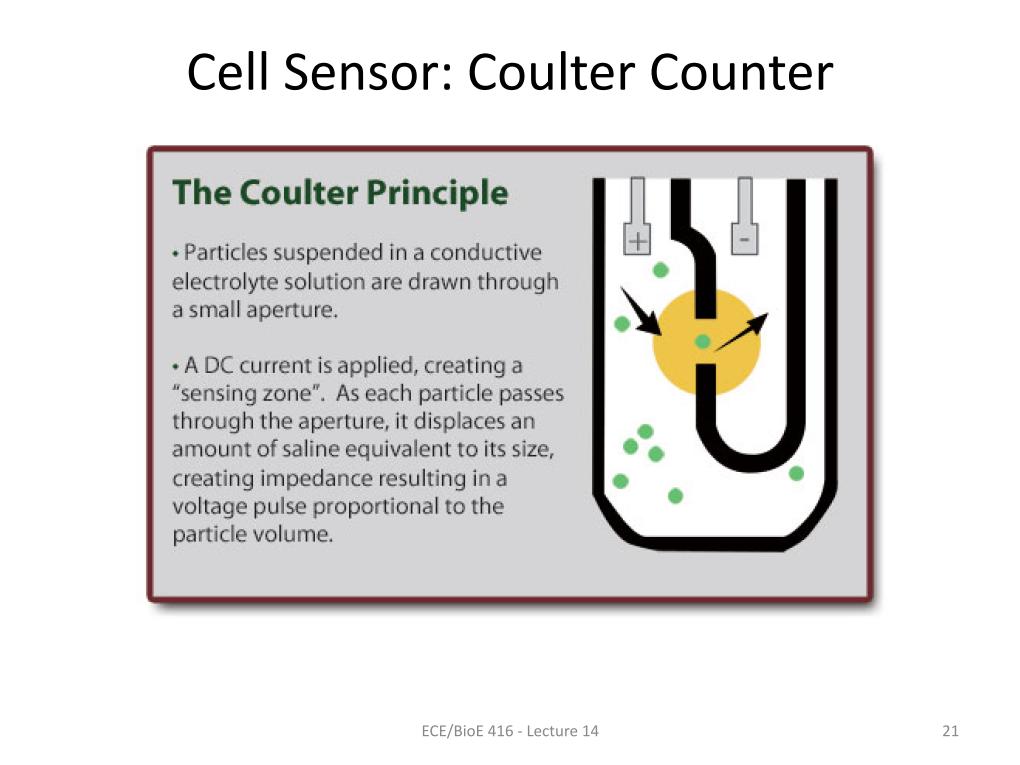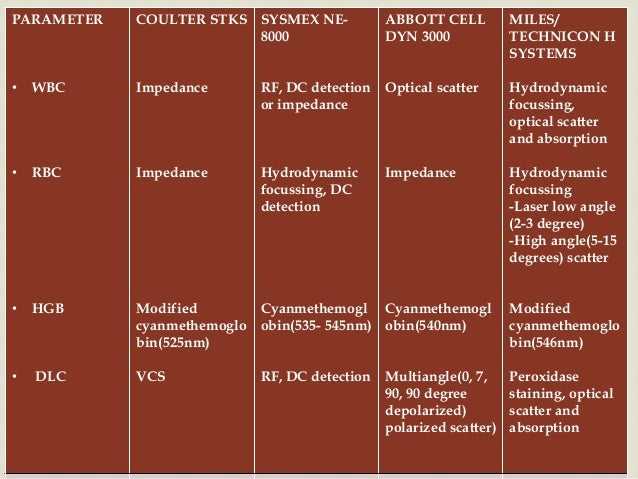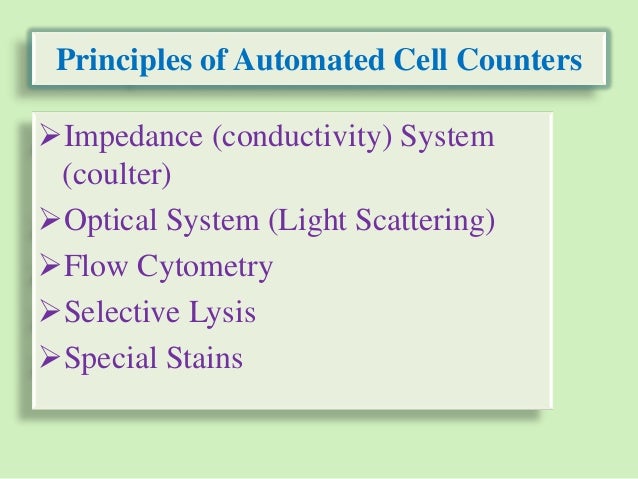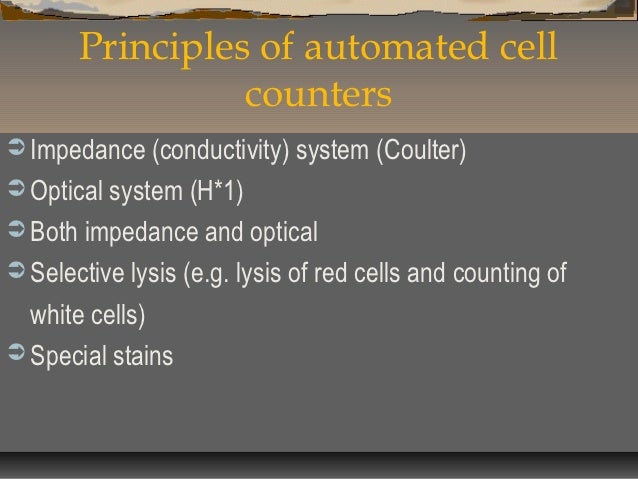Cell counting is any of various methods for the counting or similar quantification of cells in the life sciences including medical diagnosis and treatment it is an important subset of cytometry with applications in research and clinical practice.
Optical impedance cell counting.
The impedance changes as a cell passes through.
Red blood cell count also known as corpuscles.
Automated systems are now based on flow through also called flow cytometry optical technologies that identify cells on the basis of light scatter properties broadly equating to the cell s physical characteristic differences.
A typical coulter counter has one or more microchannels that.
Blood cell recognition is optimized by diluting specifically to the number of cells present in the blood so as to count the number of cells.
Automation of cell counting and characterization has revolutionized hematology analysis.
For example the complete blood count can help a physician to determine why a patient feels unwell and what to do to help.
Instruments with optical counting in addition to impedance counting can give the 5 part differential.
Provided an electric circuit model of a cell between a pair of electrodes in a channel fig.
Pulse height cell volume radiofrequency current rf.
In 2007 morgan et al.
The coulter principle and the coulter counter that is based on it is the commercial term for the technique known as resistive pulse sensing or electrical zone sensing.
Depending on the instrument this might only be a three part differential lymphs monos and granulocytes.
The proportion of platelets greater than 12 fl in the total platelet count may be an indicator of possible platelet clumping giant platelets or cell fragments.
Selective lysis of red cells and counting of white cells special stains detection impedance technology direct current dc.
8 15 16 the xe series has the capability to run the platelet counting in the optical mode which eliminates common interferences found with impedance counting.
It is used in almost every hematology analyzer.
Principles of automated cell counters impedance conductivity system coulter optical system light scattering flow cytometry selective lysis special stains 7.
Cell counting and sizing is based on the detection and measurement of changes in electrical impedance resistance produced.
A coulter counter is an apparatus for counting and sizing particles suspended in electrolytes it is used for cells bacteria prokaryotic cells and virus particles.
Pulse height nuclear size and density optical system scattered laser light fluorescence light.
The traditional method for counting cells is electrical impedance also known as the coulter principle.
3a the impedance dependent on medium resistance r m cell cytoplasm resistance r i cell membrane capacitance c mem electrical double layer and capacitance c dl and all value of these parameters contributing to total impedance are dependent on frequency ω.
Electrical impedance method the coulter principle 8.
